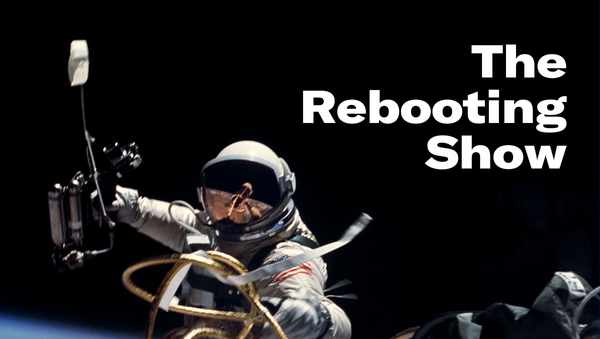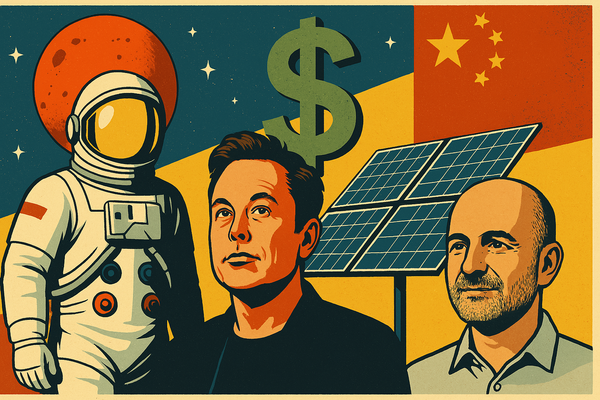Posting through it
From the art of storytelling to the science of facts

Reminder: Sign up for The Rebooting’s next online forum, Getting Off the Traffic Treadmill, on April 10 from 1-2pmET. I’ll be joined by Dotdash Meredith chief innovation officer Jon Roberts and Viafoura CEO Mark Zohar to discuss how publishers need to shift their focus from acquiring passive audiences to creating active and loyal communities. Topics covered include:
- Should publishers prepare for life after SEO?
- What makes for a resilient, modern media distribution strategy?
- What does a successful community strategy look like?
In today’s newsletter, I wrote about the declining utility of narrative as a journalistic device and (for TRB members) how to evolve a personal media brand. Sign up for a TRB membership. First a message from The Rebooting partner Omeda.

Join us in downtown Chicago for OX7

We’re two months away from OX7, the industry conference for media and audience professionals. Join us May 15-17 to hear from the media industry’s best and brightest minds, including:
- Adam Ryan, CEO and Founder of Workweek
- Alexi Huntley Khajavi, President of Hospitality, Travel and Wellness
- Rhonda Wunderlin, SVP of Performance Marketing of Questex
- Amanda Landsaw, VP of Audience Development of Endeavor Business Media
- Kerry Smith, Division President of Access Intelligence
- Nikki Smith, COO of BNP Media
- Craig Fuller, Founder and CEO of Firecrown Media and FreightWaves Media
- Jacob Donnelly, Founder of A Media Operator
The science of facts
I went to journalism school at the turn of the century. Even then, it was obvious to me that the training was wholly inadequate to the profession we were entering, still coasting on analog business models in the froth of the dot-com bubble. The seeds of the industry’s demise were already planted, only its full effect would be delayed. Instead of getting ahead of this, I saw too much nostalgia. Rather than making sure students were experts in the areas they would cover, the focus was on being a generalist, having the skills to go from covering courts to fires to plane crashes, and wrapping that around a narrative.
Look at the muted fallout from New York magazine’s reporting on neuroscientist/podcaster/supplements peddler Andrew Huberman’s juggling several simultaneous relationships. It was a classic narrative piece in service of portraying Huberman as a hypocrite. It did so through his personal character as opposed to disputing his expertise on the grounds of science.
In a time not long ago, Huberman would have attempted a weeping apology. Instead, Huberman chose to respond on X with a six-and-a-half-minute video in front of a whiteboard breaking down the effect of exposure to light on health and physiology. He is posting through it. There’s no exodus of supplements advertisers and little evidence of audience revolt.
This will become the default for these micro-dramas because main characters are swapped in and out so quickly – and because more of these dramas will involve those with their own platforms. Just look at how aggro LSU women’s basketball coach Kim Mulkey has been with what turned out to be a rather benign Washington Post profile of a successful, old-school coach a bit behind the times who like many successful people is full of themselves. This is what a “hit piece” looks like?
Both the Huberman and Mulkey pieces are classic profiles that lean heavily on storytelling through anecdote. The Huberman profile stretches over 8,000 words, and the Mulkey piece requires 39 minutes to listen to it.
Compare that approach to Nature’s critical review of Jonathan Haidt’s new book, “The Anxious Generation,” which makes the case that children’s brains are being rewired by technology. Haidt’s thesis will resonate with most people who pick up their phones an average of 144 times a day on the hunt for the next dopamine hit. Nature’s review, authored by a professor of science and informatics, takes on Haidt’s thesis on the basis of the science. That will spark a needed debate over the nature of childhood anxiety and causes of it. These are necessary conversations. That’s a far cry from impugning Haidt’s work because he regularly gives his kids iPads in restaurants.
“Journalism must evolve from being the ‘art of storytelling’ to becoming the ‘science of facts,’ grounded in quantifiable data and analytical language—because mathematical models are the closest tool we have to approaching universal truth,” writes Francesco Marconi, former R&D head at The Wall Street Journal. “The sector that currently gets closer to this concept is financial news; stock prices and economic indices guide coverage and provide numerical orientation about the markets, where the impact of events in the real world can be measured by an analytical reaction.”
News publishers need more expertise in their newsroom and also a network of practitioners. Personality is part of the mix, but insufficient for a well-rounded brand. The breakdown of an in-bounds play between J.J. Reddick and LeBron James is beyond what a sports journalist could provide. That sector is following the lead of tech, as the weight of influence moves to the athletes who understand the intricacies of the craft. There will always be room for personality and conflict – drama will remain a great ingredient – but expertise is the main dish.
Marconi advocates for the elimination “morality from journalism so it can become, once again, a utilitarian tool.” That will require require a cultural shift of newsrooms to explaining the world as it is rather than advocating for how the world should be.
The evolution of an individual brand
From time to time, I will update the progress in building The Rebooting since most of what I write and podcast about informs how I approach this business. I’ll try to be as transparent as possible, since I don’t believe there are many trade secrets in the publishing business. Send me a note on topics you’d want to see: bmorrissey@therebooting.com
The most important question anyone building a business gets is the simplest one: What kind of business do you want to build? My bet in starting The Rebooting was that publishing organizations will need to get more efficient, and platforms and tools are emerging to do far more with far fewer resources. Having a “personal brand” is leverage.
Once you achieve product-market fit, which I define as a reliable audience and sufficient cash flow to profitably support operations, you need to understand if you will build a solo business that has a lower ceiling or expand into a more multifaceted business that will require more infrastructure. Some people like to start with a fixed end point in mind, but I find this a fool’s errand because so much shifts as you go that optionality is more valuable. In a fast-changing environment, it’s better to optimize to flexibility




